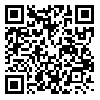BibTeX | RIS | EndNote | Medlars | ProCite | Reference Manager | RefWorks
Send citation to:
URL: http://mjiri.iums.ac.ir/article-1-2675-en.html
Background: Proper rotation of components in total knee arthroplasty (TKA) will largely affect the postoperative outcome. Ethnical variation may affect rotational profile. We aimed to evaluate distal femur rotation in Iranian population using transepicondylar axes.
Methods : From a total of 450 knee CT scans and via consecutive sampling, 150 qualified subjects with normal lower extremities alignment were selected comprising 96 (64%) males and 54 (36%) females aging 17-80 years. The posterior condylar angle and condylar twist angles were defined as angles between either surgical epicondylar axis (line connecting lateral epicondylar prominence and the medial sulcus) or clinical epicondylar axis (line connecting most prominent points of both epicondyle) and posterior conylar line. Data were compared among genders.
Results : Average age of our samples was 43 years (ranging 11-80). Mean (±sd) values for posterior condylar angle and condylar twist angles were 2.35º(±1.34) and 5.77º(±1.70), respectively. The former variable was not discernible in twenty of our subjects because of obscure medial sulcus. Our findings were totally appeared similar to studies from other ethnicities and the observed minor differences may have originated from amount of osteoarthritis and malalignment.
Conclusion : Overall, Iranian distal femur rotational profile was similar to other reports. Some minor observed differences may be partially due to samples’ age and different amount of knee osteoarthritis. It is proposed to rely on several methods for determining rotational profile while performing TKA. Moreover, preoperative computed tomography should be fully scrutinized especially in severely osteoarthitic knees.
| Rights and permissions | |
 |
This work is licensed under a Creative Commons Attribution-NonCommercial 4.0 International License. |





